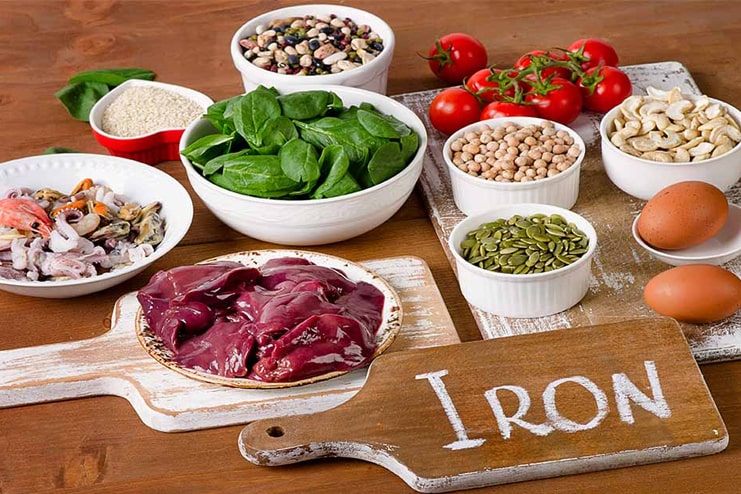
Iron
The role of iron in the body
The human body needs iron to make two vital proteins: hemoglobin and myoglobin. About 70% of the body's iron is found in these two proteins. Iron is also used in the production of proteins involved in the production of collagen or some neurotransmitters for the respiration and metabolism of cells and the production of energy or contribute to the immune system's proper functioning. Six percent of the body's iron is used to make these proteins. The remaining quarter of the body's iron (about 25%) is stored as ferritin in the liver cells or other body cells or circulates in the bloodstream.
Food sources containing iron
The most important food sources of iron are found in foods of animal origin. Red meat, white poultry (chicken and poultry), and seafood contain hemoglobin-derived iron.
Other plant iron sources are found in lentils, beans, tofu, spinach, and nuts, which contain another type of iron called non-heme iron.
The amount of iron needed daily
Daily iron requirements vary depending on age and condition. The need for male children and men at different ages is between 7 and 11 mg and for most of life is about 8 mg per day.
Female children have a similar need for iron by the age of 14.
Females need 15 to 18 mg of iron daily due to the onset of menstrual blood due to monthly blood loss.
In pregnant women, this need increases to 27 mg per day. Vegetarians who avoid red and white meat need almost twice as much iron (1.8 times) as ordinary people.
Complications of iron deficiency
The most important complication of iron deficiency is iron deficiency anemia. The body begins to consume stored iron in the blood, liver, spleen, and bone marrow. As iron deficiency continues in the diet, red blood cells become smaller, and their hemoglobin levels decrease. As a result, the amount of oxygen carried from the lungs to the tissues is also reduced. This lack of oxygen also causes a lack of energy and a feeling of constant tiredness, difficulty regulating body temperature, inability to do daily activities and exercise, and problems with memory and concentration.
Groups at risk of iron deficiency
Pregnant women, infants, and young children, women with heavy monthly bleeding, people who donate much blood (about once every eight weeks), people with chronic gastrointestinal diseases, people with a history of cancer or gastrointestinal surgery are at risk of iron deficiency. Finally, people who follow various vegetarian diets are more at risk for iron deficiency and anemia.
Excessive iron intake
Excessive iron intake from food rarely causes side effects. An increase in iron in the body usually occurs following the arbitrary use of iron supplements and pills. Early symptoms include indigestion, abdominal pain, constipation, and nausea and vomiting. High doses of iron can lead to poisoning and severe liver damage, coma, and death. This issue is vital in young children. It should be noted that iron supplements interact with many medications, so these supplements should never be taken without a doctor or pharmacist's advice.




